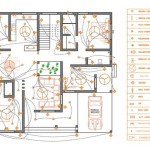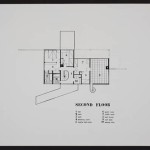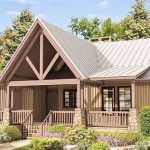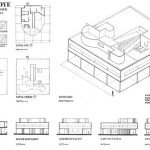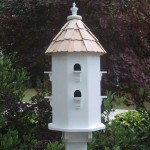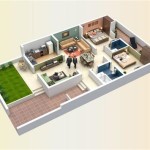Dog House Plan: A Comprehensive Guide to Building a Safe and Comfortable Shelter
Providing a safe and comfortable shelter for a canine companion is an integral part of responsible pet ownership. A well-designed and constructed dog house offers protection from the elements, providing a refuge from the sun, rain, wind, and cold. Choosing the right dog house plan is the first and most crucial step in ensuring the structure meets the specific needs of the dog and the environment.
The process of selecting and implementing a dog house plan involves considerations ranging from the dog's size and breed to the local climate and available building materials. This article aims to provide a comprehensive guide to understanding various aspects of dog house plans, outlining key factors to consider and offering practical advice for building a durable and safe shelter.
Different dog breeds have varying tolerances to different weather conditions. A short-haired breed, like a Dachshund, will require a more insulated and weather-tight dog house than a long-haired breed like a Bernese Mountain Dog, especially in colder climates. The size of the dog is also a significant factor. A dog house that is too large will not retain heat effectively in the winter, while one that is too small will restrict movement and cause discomfort. The plan must consider the dimensions of the dog, allowing enough space to comfortably stand, turn around, and lie down.
Key Considerations Before Selecting a Dog House Plan
Before delving into the intricacies of specific dog house plans, it is essential to address several fundamental considerations that will influence the decision-making process. These preliminary factors ensure the chosen plan aligns with the dog's needs, the surrounding environment, and the builder's resources.
Dog's Size and Breed: Accurately measure the dog's height, length, and width. Add a buffer of several inches to each dimension to ensure adequate space within the dog house. Different breeds have varying tendencies to chew, dig, or otherwise damage structures. The plan must account for these behaviors by using durable materials and reinforcing vulnerable areas. For example, a dog prone to chewing might necessitate metal edging around the entrance or chew-resistant wood.
Climate Conditions: The local climate heavily influences the design and materials used for the dog house. In colder regions, insulation is paramount to retaining heat and protecting the dog from hypothermia. This may involve incorporating insulation materials like fiberglass, rigid foam, or even straw bales. In warmer climates, ventilation is crucial to prevent overheating. The plan should include features like windows, vents, or a raised floor to promote airflow. For areas with frequent rainfall or snowfall, a sloped roof is necessary to ensure water runoff and prevent water damage.
Building Materials and Skills: The choice of building materials depends on factors such as cost, availability, durability, and ease of use. Common materials include wood, plastic, and metal. Wood is a popular choice due to its affordability, ease of workability, and aesthetic appeal. However, it requires regular maintenance to prevent rot and insect infestation. Plastic is a low-maintenance option that is resistant to water damage, while metal is highly durable but can be more challenging to work with. The builder's skill level is a critical factor. A complex plan may be beyond the capabilities of a novice builder, while a simpler plan may be sufficient for someone with limited experience. It's essential to realistically assess one's abilities and choose a plan that aligns with their skill set.
Types of Dog House Plans
Numerous dog house plans are available, each with its own set of features and advantages. These plans can be broadly categorized based on their design, materials, and intended use.
Traditional Gable Roof Dog House: This is the most common and recognizable type of dog house. It features a simple rectangular structure with a sloping gable roof. The gable roof design allows for effective water runoff and provides additional headroom inside the house. This type of plan is relatively easy to construct, making it suitable for beginner builders. Materials typically include lumber, plywood, and roofing shingles.
Insulated Dog House: In colder climates, an insulated dog house is essential for protecting the dog from freezing temperatures. These plans incorporate insulation materials within the walls, floor, and roof to retain heat. Additional features may include a raised floor to prevent heat loss to the ground and a small entrance to minimize drafts. Materials used for insulation include fiberglass, rigid foam, and even recycled materials like denim or shredded paper.
Elevated Dog House: An elevated dog house sits on legs or a platform, raising it off the ground. This design offers several advantages, including improved ventilation, protection from flooding, and pest control. The elevated structure allows air to circulate underneath the house, keeping it cooler in warm weather. It also prevents water from entering the house during heavy rain or flooding. The space underneath the house can also serve as a storage area for dog toys or supplies.
Modern Dog House: Modern dog house designs often incorporate contemporary architectural elements and unconventional materials. These plans may feature clean lines, minimalist aesthetics, and sustainable materials. Examples include dog houses made from recycled shipping containers, repurposed pallets, or bamboo. Modern dog houses often prioritize aesthetics and functionality, blending seamlessly with modern home designs.
Essential Features to Include in a Dog House Plan
Regardless of the chosen plan, certain essential features should be incorporated to ensure the dog house provides a safe, comfortable, and functional shelter.
Proper Ventilation:Adequate ventilation is critical for maintaining a healthy and comfortable environment inside the dog house. Stagnant air can lead to the build-up of moisture, bacteria, and unpleasant odors. Ventilation can be achieved through various means, such as installing windows, vents, or a screened door. The size and placement of the vents should be carefully considered to ensure adequate airflow without creating drafts. In warmer climates, a larger vent area may be necessary, while in colder climates, smaller, adjustable vents may be preferable.
Raised Floor: A raised floor elevates the dog house above the ground, providing several benefits. It prevents moisture from seeping into the house, keeping the interior dry and comfortable. It also provides insulation from the cold ground, reducing heat loss in the winter. Additionally, a raised floor can deter pests from entering the house. The height of the floor should be sufficient to provide adequate clearance but not so high that it makes it difficult for the dog to enter and exit.
Weather Protection: The dog house must provide adequate protection from the elements, including rain, snow, wind, and sun. This can be achieved through various design features, such as a sloped roof, overhanging eaves, and a windbreak entrance. A sloped roof effectively sheds water and snow, preventing it from accumulating on the roof. Overhanging eaves provide additional protection from rain and sun. A windbreak entrance, such as a small tunnel or a flap door, helps to block wind and prevent drafts from entering the house. The materials used for the dog house should also be weather-resistant and durable.
Easy Access for Cleaning: Regular cleaning is essential for maintaining a hygienic environment inside the dog house. The plan should incorporate features that make cleaning easy and efficient. This may include a removable roof or floor, allowing for easy access to the interior. The materials used for the interior surfaces should be easy to clean and disinfect. Smooth, non-porous surfaces are preferable to rough, absorbent surfaces. Regular cleaning helps to prevent the build-up of dirt, bacteria, and parasites.
Non-Toxic Materials: The materials used to build the dog house must be non-toxic and safe for the dog. Avoid using treated lumber that contains harmful chemicals, such as arsenic or chromium. Opt for untreated lumber or use a dog-safe sealant or paint to protect the wood. Be careful when using nails, screws, or staples to ensure that they are properly secured and do not pose a choking hazard. When using insulation, choose a non-toxic option that is safe for animals. Always prioritize the dog's safety and well-being when selecting building materials.
Implementing a dog house plan requires careful consideration of various factors, from the dog's specific needs to the environmental conditions and available resources. By thoroughly evaluating these aspects and incorporating essential features into the design, it is possible to create a safe, comfortable, and durable shelter for a canine companion.

14 Diy Dog Houses How To Build A House Plans Blueprints

Luxury Plans For Dog House Check More At Http Www Jnnsysy Com Easy Diy

Large Dog House Plans Free Construct101

Extra Large Dog House Plans

Small Dog House Plans Step By Free Construct101

13 Diy Doghouse Plans And Ideas The House Of Wood
:strip_icc()/Beautiful-Pallet-Dog-House-with-Veranda-1-5a202f90494ec90037893a82.jpg?strip=all)
14 Free Diy Dog House Plans Anyone Can Build

Cold Weather Dog House Plans Bradshomefurnishings Winter Insulated Diy

How To Build A Dog House

Traditional Dog House Plan Bradshaw
Related Posts

